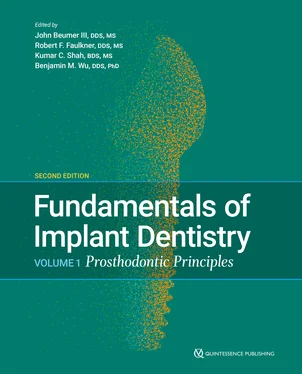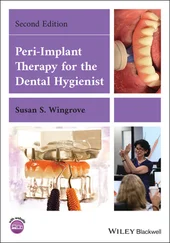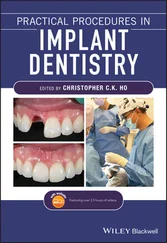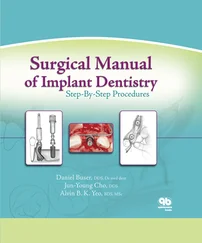Summary of clinical outcome data
The primary factor in impaired mastication is tooth loss, which will continue to be a problem and require prosthetic restoration for the immediate future. Neither implant-assisted nor implant-supported mandibular dentures restore masticatory function to levels seen with intact dentition. Most patients with reasonable denture-bearing surfaces are able to masticate at the same level of effectiveness with either conventional complete dentures, an implant-retained or -supported overdenture in the mandible opposing a conventional or implant-supported maxillary denture, or a fixed hybrid denture in the mandible opposing a conventional or implant-supported prosthesis in the maxilla. Patients with mandibular ridge resorption are more likely to benefit from improved masticatory function with implant-retained or -supported prostheses than with CDs. Although the evidence is limited, there appears to be little improvement in masticatory function with increased implant support over the implant-retained prosthesis.
Patient perceptions of satisfaction with denture treatment, chewing function, comfort, stability, and retention are all improved with implant-retained or -supported prostheses. It is not clear with the current evidence if increased implant support significantly improves patient perceptions of the implant-supported denture beyond the two-implant overdenture. The evidence does not indicate a clear superiority of fixed hybrid prostheses over implant-supported removable prostheses in patient perceptions, where preferences may depend more on individual expectations for esthetics, stability, and convenience.
Summary
As discussed in this chapter, there are limitations to the functional benefits of IOD treatment in patients with reasonably good residual ridges who do not experience difficulty in adapting to CDs. There continues to be somewhat higher initial and maintenance costs for implant prostheses, reducing access to the treatment for financially disadvantaged patients. However, the use of implant-supported overdentures in patients with severe ridge resorption or with chronic tissue irritation and difficulty in adaption to CDs has been shown to be beneficial, both in improved masticatory function and in psychologic impact. Additional implant support, either in the form of an implant-supported overdenture or a fixed prosthesis, does not appear to have a significant impact on mastication efficiency.
References
1.Smith M. Measurement of personality traits and their relation to patient satisfaction with complete dentures. J Prosthet Dent 1976;35:492–503.
2.Smedley TC, Friedrichsen SW, Cho MH. A comparison of self-assessed satisfaction among wearers of dentures, hearing aids, and eyeglasses. J Prosthet Dent 1989;62:654–661.
3.Jonkman RE, Van Waas MA, Kalk W. Satisfaction with complete immediate dentures and complete immediate overdentures. A 1 year survey. J Oral Rehabil 1995;22:791–796.
4.Gjengedal H, Berg E, Boe OE, Trovik TA. Self-reported oral health and denture satisfaction in partially and completely edentulous patients. Int J Prosthodont 2011;24:9–15.
5.Tallgren A. The continuing reduction of the residual alveolar ridges in complete denture wearers: A mixed-longitudinal study covering 25 years. J Prosthet Dent 1972;27:120–132.
6.Atwood DA. Reduction of residual ridges: A major oral disease entity. J Prosthet Dent 1971;26:266–279.
7.Atwood DA, Coy WA. Clinical, cephalometric, and densitometric study of reduction of residual ridges. J Prosthet Dent 1971;26:280–295.
8.Kelly E. Changes caused by a mandibular removable partial denture opposing a maxillary complete denture. J Prosthet Dent 1972;27:140–150.
9.Yeh CK, Rodan GA. Tensile forces enhance prostaglandin E synthesis in osteoblastic cells grown on collagen ribbons. Calcif Tissue Int 1984;36(suppl 1):S67–S71.
10.Sanuki R, Shionome C, Kuwabara A, et al. Compressive force induces osteoclast differentiation via prostaglandin E(2) production in MC3T3-E1 cells. Connect Tissue Res 2010;51:150–158.
11.Nishimura I, Szabo G, Flynn E, Atwood DA. A local pathophysiologic mechanism of the resorption of residual ridges: Prostaglandin as a mediator of bone resorption. J Prosthet Dent 1988;60:381–388.
12.Tallgren A. Changes in adult face height due to ageing, wear and loss of teeth and prosthetic treatment. A roentgen cephalometric study mainly on Finnish women. Acta Odontol Scand 1957;15(suppl 24):7–122.
13.Atwood DA. A cephalometric study of the clinical rest position of the mandible: Part II. The variability in the rate of bone loss following the removal of occlusal contacts. J Prosthet Dent 1957;7:544–552.
14.Carlsson GE, Persson G. Morphologic changes of the mandible after extraction and wearing of dentures. A longitudinal, clinical, and x-ray cephalometric study covering 5 years. Odontol Revy 1967;18:27–54.
15.Jahangiri L, Devlin H, Ting K, Nishimura I. Current perspectives in residual ridge remodeling and its clinical implications: A review. J Prosthet Dent 1998;80:224–237.
16.Klemetti E, Vainio P, Lassila V, Alhava E. Trabecular bone mineral density of mandible and alveolar bone height in postmenopausal women. Scand J Dent Res 1993;101:166–170.
17.Bollen AM, Taguchi A, Hujoel PP, Hollender LG. Number of teeth and residual alveolar ridge height in subjects with a history of self-reported osteoporotic fractures. Osteoporos Int 2004;15:970–974.
18.Ozola B, Slaidina A, Laurina L, Soboleva U, Lejnieks A. The influence of bone mineral density and body mass index on resorption of edentulous jaws. Stomatologija 2011;13:19–24.
19.Nishimura I, Hosokawa R, Atwood DA. The knife-edge tendency in mandibular residual ridges in women. J Prosthet Dent 1992;67:820–826.
20.Nishimura I, Atwood DA. Knife-edge residual ridges: A clinical report. J Prosthet Dent 1994;71:231–234.
21.Von Wowern N, Kollerup G. Symptomatic osteoporosis: A risk factor for residual ridge reduction of the jaws. J Prosthet Dent 1992;67:656–660.
22.Nishimura I, Hosokawa R, Kaplan ML, Atwood DA. Animal model for evaluating the effect of systemic estrogen deficiency on residual ridge resorption. J Prosthet Dent 1995;73:304–310.
23.DeVan MM. Basic principles in impression making. J Prosthet Dent 1952;2:26–35.
24.Sukotjo C, Abanmy AA, Ogawa T, Nishimura I. Molecular cloning of wound inducible transcript (wit 3.0) differentially expressed in edentulous oral mucosa undergoing tooth extraction wound-healing. J Dent Res 2002;81:229–235.
25.Suwanwela J, Lee J, Lin A, et al. A genetic association study of single nucleotide polymorphisms in FGFR1OP2/wit3.0 and long-term atrophy of edentulous mandible. PLoS One 2011;6(1):e16204.
26.Sukotjo C, Lin A, Song K, Ogawa T, Wu B, Nishimura I. Oral fibroblast expression of wound-inducible transcript 3.0 (wit3.0) accelerates the collagen gel contraction in vitro. J Biol Chem 2003;278:51527–51534.
27.Lin A, Hokugo A, Choi J, Nishimura I. Small cytoskeleton-associated molecule, fibroblast growth factor receptor 1 oncogene partner 2/wound inducible transcript-3.0 (FGFR1OP2/wit3.0), facilitates fibroblast-driven wound closure. Am J Pathol 2010;176:108–121.
28.Cardaropoli D, Cardaropoli G. Preservation of the postextraction alveolar ridge: A clinical and histologic study. Int J Periodontics Restorative Dent 2008;28:469–477.
29.Araújo MG, Lindhe J. Ridge preservation with the use of Bio-Oss collagen: A 6-month study in the dog. Clin Oral Implants Res 2009;20:433–440.
30.Araújo MG, Lindhe J. Socket grafting with the use of autologous bone: An experimental study in the dog. Clin Oral Implants Res 2011;22:9–13.
31.Von Wowern N, Gotfredsen K. Implant-supported overdentures, a prevention of bone loss in edentulous mandibles? A 5-year follow-up study. Clin Oral Implants Res 2001;12:19–25.
Читать дальше












